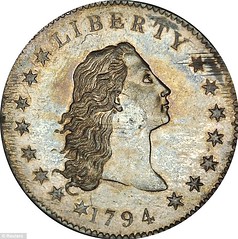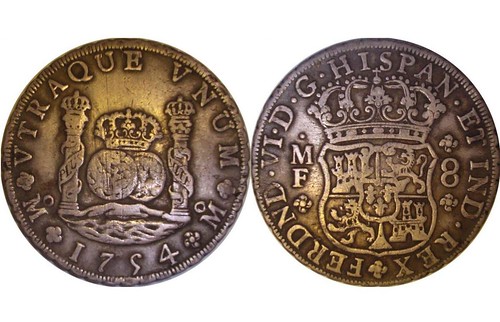
PREV ARTICLE
NEXT ARTICLE
FULL ISSUE
PREV FULL ISSUE
ALEXANDER HAMILTON AND SILVER FINENESSCraig Sholley and Harry Salyards submitted this article about their recent research into the fineness of the silver in early U.S. coinage. Thank you. -Editor
Alexander Hamilton Was Right
Craig Sholley and Harry Salyards
Early this year, Harry Salyards and I began researching these points and found both the criticism and the supposed arbitrage trade completely without merit. Not only did the authors criticizing Hamilton use incorrect period gold-to-silver ratios, along with incorrect weights and fineness standards for the Spanish dollars of the early 1790s, they often used assay figures for either earlier or later date Spanish dollars. And, even then, the data were often misquoted or misrepresented. The fact is that Hamilton was correct when he quoted various world gold-to-silver ratios. According to period documents, including English Parliamentary records, England's ratio was 15.2:1, just as Hamilton had noted. And, according to the International Monetary Conference of 1878, prices on the London exchange in 1790 to 1792 yield an average of 14.83:1 and those on the Hamburg exchange show a ratio of 15.08:1. Thus, average gold-to-silver ratio on the two major gold and silver exchanges in 1790 to 1792 was 14.95:1 - a figure remarkably close to Hamilton's estimate of 14.8:1. Nor were Hamilton's assay and estimated fineness figures for the Spanish dollar off by all that much. While the Spanish coinage law of 1772 set the dollar at 417.8 grains and .9028 fine, there was an allowed deficiency in both weight and fineness such that coins from the Mexican mints typically ran 416 grains gross and contained just 374 grains of fine silver. Additionally, period English, French, and American assays show the average Spanish dollar in circulation was not only underweight by about 3 grains, they also averaged just .898 fine. The average circulated Spanish dollar thus contained about 372.4 grains of fine silver, or just over one grain more than the U.S. dollar. As to the supposed Caribbean arbitrage trade of U.S. dollars for Spanish, records of silver deposits at the U.S. Mint do not support this claim. From 1794 to 1805, just eight deposits, totaling a little over $110,000, were specifically noted as Spanish dollars. Another five deposits were noted as a mix of Spanish dollars and French crowns. Even if we assume that a majority of the mixed deposits were Spanish dollars, the total would still be not much over $140,000. In fact, large deposits of Spanish dollars at the U.S. Mint did not begin until 1806, coinciding with the French and Spanish defeat at Trafalgar in October of 1805. From 1807 through the early 1820s, U.S. Mint silver deposits did mainly consist of Spanish dollars. However, this was due to internal and international conflicts including the 1808 French invasion of Spain and the 1821 Mexican Revolution, not an arbitrage trade. f The average fineness and weight of Spanish dollars in circulation likewise does not support the supposed Caribbean arbitrage trade (or anywhere else in the world, for that matter). Assays show the average circulated Spanish dollar of the 1790s was about 3 grains light at 414.7 grains and just .898 fine. U.S. dollars were thus just over one grain light in fine silver, or about 0.3%, far too little to support the supposed exchange. The exchange of U.S. dollars for Spanish dollars and the supposed subsequent recoinage is thus nothing more than a tale created to explain the disappearance of early U.S. dollars. In fact, the early dollars disappeared from U.S. circulation because they were high value, easy to count, and readily accepted in the West Indies. They were thus preferentially used to pay for Caribbean and other imports. As can be seen from the forgoing, neither the criticism of Hamilton nor the supposed arbitrage of US dollars holds up to any serious scrutiny. Although Harry Salyards and I will be more fully addressing these points in a future article in the John Reich Journal, we felt our findings important enough to let the numismatic community know what we have found and put to rest these enduring numismatic myths. We'll look forward to the published research paper. -Editor
Wayne Homren, Editor The Numismatic Bibliomania Society is a non-profit organization promoting numismatic literature. See our web site at coinbooks.org. To submit items for publication in The E-Sylum, write to the Editor at this address: whomren@gmail.com To subscribe go to: https://my.binhost.com/lists/listinfo/esylum All Rights Reserved. NBS Home Page Contact the NBS webmaster 
|


